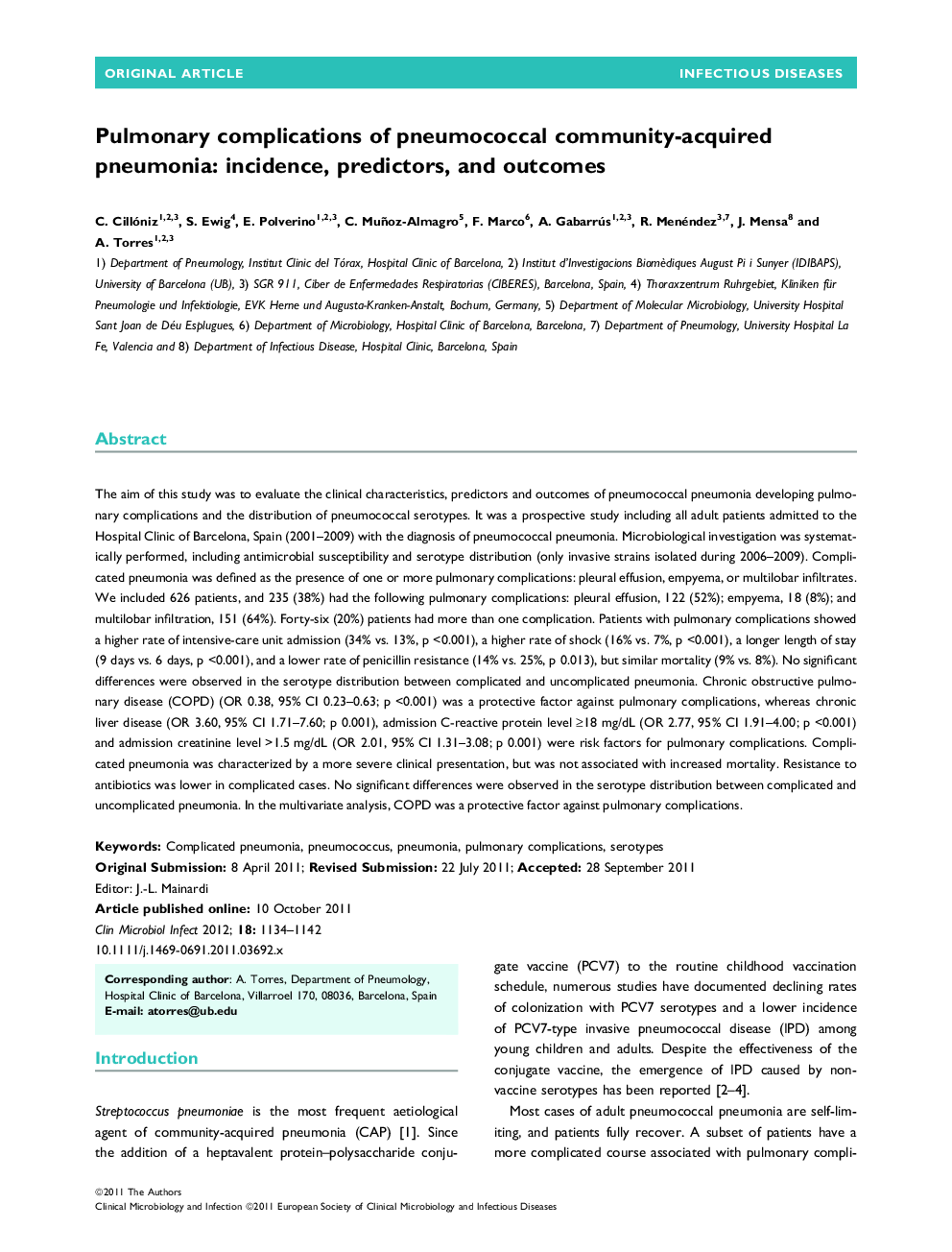| Article ID | Journal | Published Year | Pages | File Type |
|---|---|---|---|---|
| 3397073 | Clinical Microbiology and Infection | 2012 | 9 Pages |
The aim of this study was to evaluate the clinical characteristics, predictors and outcomes of pneumococcal pneumonia developing pulmonary complications and the distribution of pneumococcal serotypes. It was a prospective study including all adult patients admitted to the Hospital Clinic of Barcelona, Spain (2001–2009) with the diagnosis of pneumococcal pneumonia. Microbiological investigation was systematically performed, including antimicrobial susceptibility and serotype distribution (only invasive strains isolated during 2006–2009). Complicated pneumonia was defined as the presence of one or more pulmonary complications: pleural effusion, empyema, or multilobar infiltrates. We included 626 patients, and 235 (38%) had the following pulmonary complications: pleural effusion, 122 (52%); empyema, 18 (8%); and multilobar infiltration, 151 (64%). Forty-six (20%) patients had more than one complication. Patients with pulmonary complications showed a higher rate of intensive-care unit admission (34% vs. 13%, p <0.001), a higher rate of shock (16% vs. 7%, p <0.001), a longer length of stay (9 days vs. 6 days, p <0.001), and a lower rate of penicillin resistance (14% vs. 25%, p 0.013), but similar mortality (9% vs. 8%). No significant differences were observed in the serotype distribution between complicated and uncomplicated pneumonia. Chronic obstructive pulmonary disease (COPD) (OR 0.38, 95% CI 0.23–0.63; p <0.001) was a protective factor against pulmonary complications, whereas chronic liver disease (OR 3.60, 95% CI 1.71–7.60; p 0.001), admission C-reactive protein level ≥18 mg/dL (OR 2.77, 95% CI 1.91–4.00; p <0.001) and admission creatinine level >1.5 mg/dL (OR 2.01, 95% CI 1.31–3.08; p 0.001) were risk factors for pulmonary complications. Complicated pneumonia was characterized by a more severe clinical presentation, but was not associated with increased mortality. Resistance to antibiotics was lower in complicated cases. No significant differences were observed in the serotype distribution between complicated and uncomplicated pneumonia. In the multivariate analysis, COPD was a protective factor against pulmonary complications.
